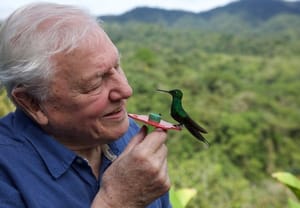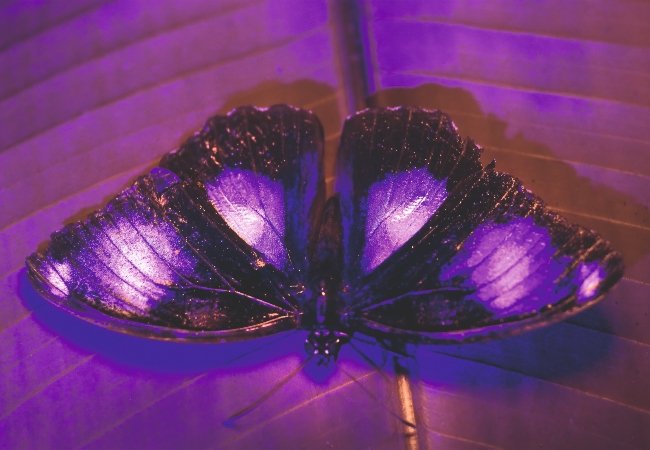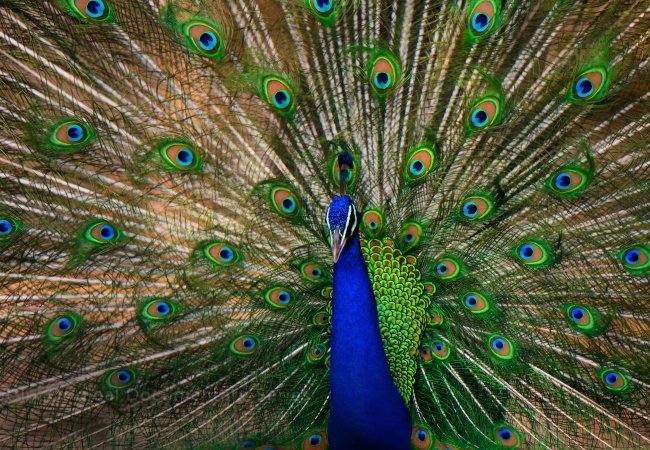
Life in Color, Netflix’s latest nature series hosted by David Attenborough, is blazing a trail for television productions in its use of cameras that capture spectrums of light invisible to the human eye. For the 94-year-old broadcaster and natural historian, it’s a lifelong dream come true.
Sharmila Choudhury, who produced the three-part series exploring the role that color plays in the lives of various species, said that Attenborough was all ears when her team at Humble Bee Films brought him the idea.
“We were surprised to learn that he had in fact had a passion for color in the natural world for a long time,” Choudhury told MovieMaker. “When he started out on his career in the early ’50s, he’d wanted to make such a series, but of course, in those days, there was only black-and-white television. So he had to settle for making a series about animal patterns, which you could still see, but he couldn’t show the colors.”
It was an easy yes for Attenborough.

A butterfly captured on an ultraviolet light camera, pictured in Life in Color, courtesy of Netflix
“When we proposed a series on color with him now, he was delighted, because that was a dream he’d had for a long time,” she said. “And the fact that there was now technology and science available to tell the stories of some of the colors that animals can see and we can’t was an added element that excited him.”
Choudhury said the series is actually the first TV production to use specialized cameras to capture animals in ultraviolet and polarized light. Attenborough pulls back the metaphorical curtain in Episode 1 of Life in Color, showing the viewer how the camera captures a flower on two different light spectrums using a special set-up.
“There were two specialist camera systems that we used — one was the UV cameras that you saw in that piece with David Attenborough. Now, those have been around for a while, but they’ve not really been used for broadcast filming. They’re mainly used for science,” Choudhury said. “Ultraviolet cameras can’t film both in our human color vision and ultraviolet at the same time, so we had to adapt the system to have these two cameras — a beam splitter system, it’s called — where the light is split into two parts that the ultraviolet goes into one camera, and the other color range, red, green, blue — we call it RGB — goes into the other camera.”
Also Read: Here’s What the Real Herman Knippenberg Thinks of The Serpent

A peacock showing off its plumage in Life in Color, courtesy of Netflix
The polarization cameras, however, are so new that they’ve primarily only been used by scientists before now. You can also see their effects in the first episode of Life in Color during the segment on fiddler crabs on the mudflats of Northern Australia. The crabs use polarized light to spot other crabs from far away.
Choudhury said the polarized cameras “had only recently in the last couple of years been developed by scientists in the lab for very different purposes. One was being used in the U.S. for medicine to detect cancerous tumors, and another one was developed in Australia by a biologist who was studying underwater animals. But again, in tanks in his laboratory — so we had to work with the scientists to adapt those two cameras to take out into the field and to test them to film real animals. So that was the challenge.”
But despite the technological advancements, the UV and polarization cameras are still in their infancy, she added.
“As time goes on, hopefully, they will improve, and there are still a lot more stories to tell,” she said. “Those cameras didn’t take big lenses, so we could only film animals that that are easy to get very close to — insects or fish. And, you know, we’ve only scratched the surface. But I think they’ve given us a first glimpse into the world that’s been hidden from our eyes until now.”

A Costa’s Hummingbird pictured in Life in Color, courtesy of Netflix
Also Read: The Serpent: Where Is the Real Life Marie-Andree Leclerc Now?
All in all, Life in Color is a trailblazer in more ways than one.
“Nobody had ever actually made a series about why the natural world is so colorful. It is fabulously, stunningly colorful,” Choudhury said. “And yet, we tend to take that for granted. I mean, how often have you asked yourself why a flamingo is pink or why a zebra has black-and-white stripes? But for the animals, their colors are actually tools for survival. So we thought that would be an interesting twist on the natural world, and maybe gives viewers an insight into why we have all these colors and patterns [and an] infinite variety of colors in bird plumage, or in the butterfly’s wings.”
Main Image: David Attenborough and a hummingbird, courtesy of Netflix.
Life in Color is now streaming on Netflix.
Share:

